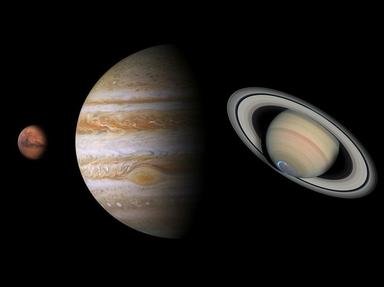Quiz Answer Key and Fun Facts
1. Asteroids are classified by their composition and the majority fall into three major groups. Which of the following is one of these groups?
2. The greatest concentration of asteroids lies between 2.1 and 3.3 astronomical units (AU) from the sun. What is this area between Mars and Jupiter commonly called?
3. The main asteroid area between Mars and Jupiter contains over a million asteroids. However, almost half of the total mass is comprised of just three asteroids. Which of the following is NOT one of the three largest asteroids between Mars and Jupiter?
4. Discovered in 1849 by Annibale de Gasparis, and named for the ruling family of Naples, what is the fourth largest asteroid by mass?
5. Interestingly, the sixth-largest asteroid (by diameter) between Mars and Jupiter shares its name with the sixth-largest moon in the Solar System. Named for one of Zeus' lovers, which asteroid was discovered in 1858 by Hermann Goldschmidt?
6. In 1866, an American astronomer found that the main asteroid area has specific gaps at 2.5 AU, 2.82 AU, 2.95 AU, and 3.27 AU. Who was this astronomer for which these asteroid gaps are named?
7. A large group of asteroids orbits the Sun between 5.05 and 5.35 AU. Partially named after a famous war, what is the name of these asteroids of which 624 Hector is the largest?
8. Certain asteroids, such as 1036 Ganymed and 433 Eros, have orbits that are well within the inner solar system. What is the name for these asteroids that have groups called Atiras, Atens, Apollos, and Amors?
9. The first dedicated asteroid probe was launched in 1996 and landed on the surface of 433 Eros in 2001. What is the name of this probe, named for a scientist famous for discovering a comet that collided with Jupiter in 1994?
10. In 2007 a space probe was launched by NASA that would become the first spacecraft to orbit two extraterrestrial bodies. What is the name of this probe which entered the orbit of Vesta in 2011 and Ceres in 2015?
Source: Author
Triviaballer
This quiz was reviewed by FunTrivia editor
rossian before going online.
Any errors found in FunTrivia content are routinely corrected through our feedback system.


